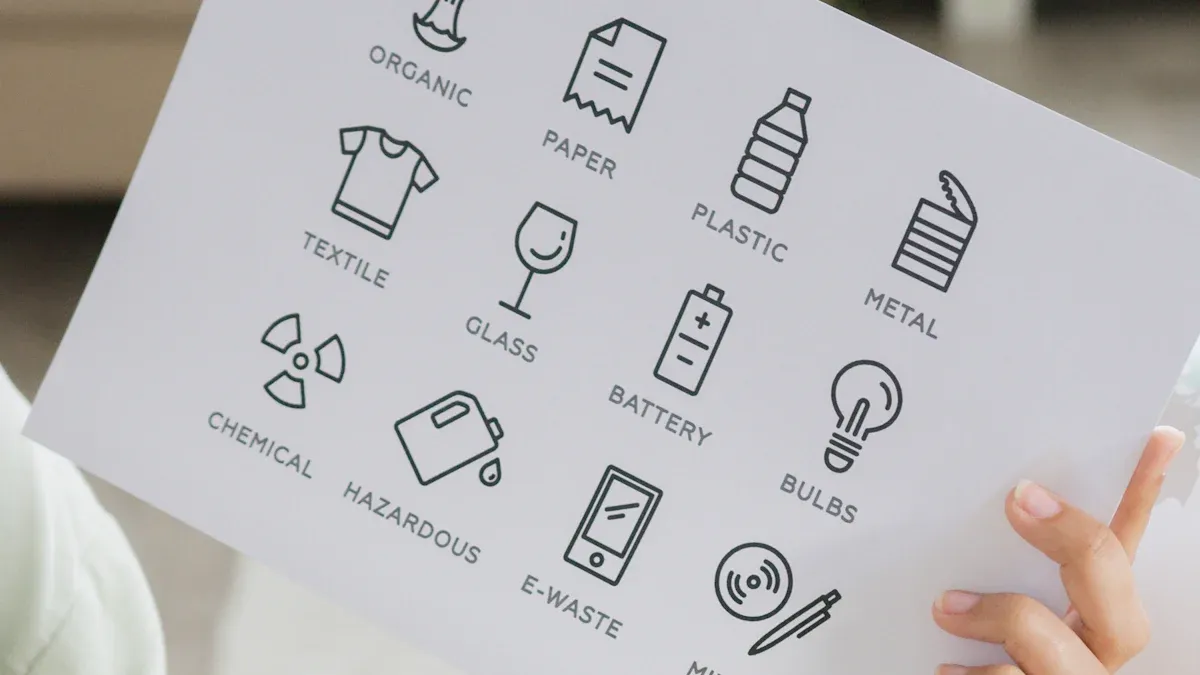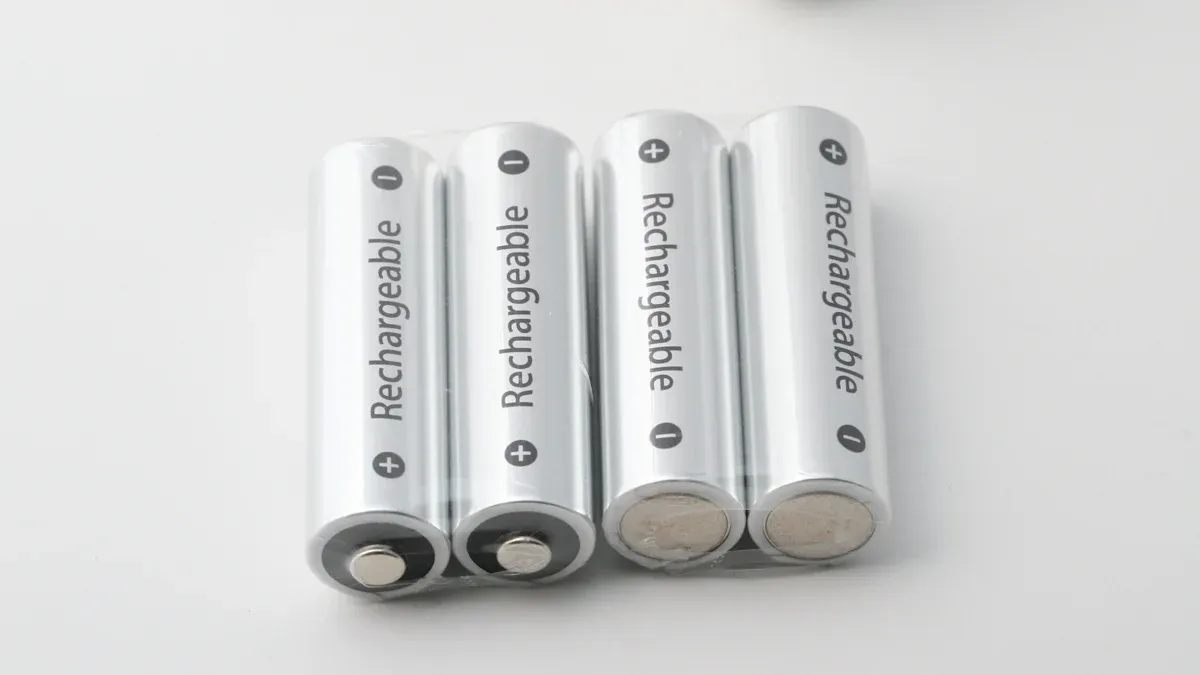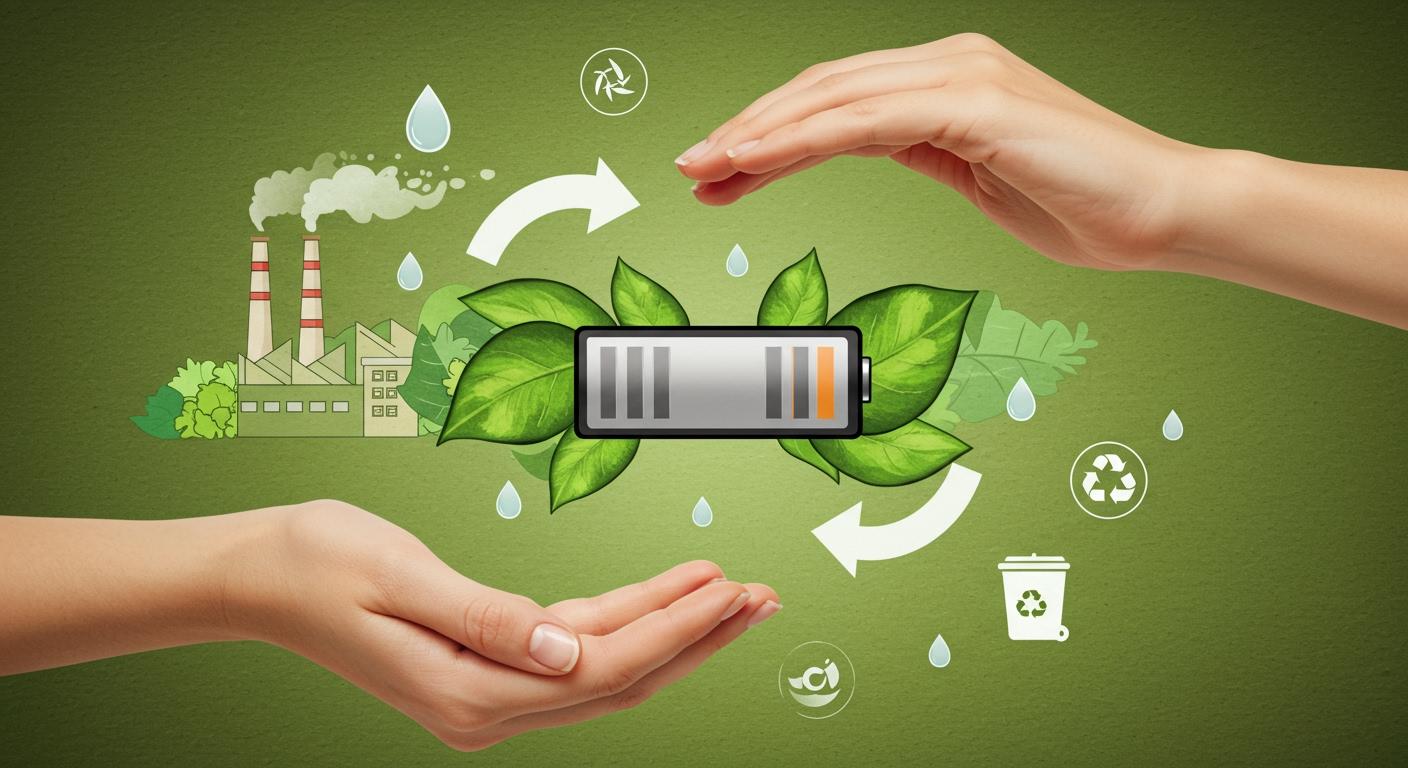Environmental protection methods in Lithium Ion battery manufacturing and recycling
You play a vital role in environmental protection when you support lithium-ion battery manufacturing and recycling. Manufacturers use several environmental protection methods to reduce waste, manage emissions, and reuse valuable materials. These efforts help protect the planet and lower pollution.
- The recycling and reuse of lithium-ion batteries are crucial for environmental protection.
- In the EU, over 70% of large lithium-ion batteries are expected to be reused within a 15-year lifespan.
- The global recycling rate for lithium-ion batteries remains low at about 5%.
New research and innovations drive sustainability in this field. The global lithium-ion battery recycling market could reach $1.83 billion by 2030. You can see that environmental protection methods have improved, but ongoing progress remains necessary.
Key Takeaways
- Support lithium-ion battery recycling to reduce waste and protect the environment.
- Choose sustainable battery materials, like sodium-ion, to lower environmental impact.
- Encourage energy-efficient manufacturing to cut carbon emissions and production costs.
- Follow local recycling guidelines to improve the low global recycling rate of lithium-ion batteries.
- Opt for products from companies using closed-loop recycling to promote sustainability.
Manufacturing and Environmental Protection

Sustainable Materials
You can help protect the environment by choosing battery materials that have a lower impact on the planet. Many manufacturers now look for alternatives to traditional lithium-ion batteries. Sodium-ion batteries use sodium, which is much more common than lithium. This change means you see less harm to the soil and less water depletion during material extraction. When you compare sodium-ion technology to lithium mining, you notice that sodium is easier to find and does not cause as much environmental damage. By supporting the use of sustainable battery materials, you help reduce the negative effects of battery production.
Energy Efficiency
Energy use in battery manufacturing has a big effect on the environment. You can see how factories have improved their processes to save energy and cut down on pollution. Here are some important changes:
- The future production cost of lithium-ion batteries is expected to drop from 17.5 to 4.6 JPY W h−1.
- CO2 emissions should fall from 161 to 37 g-CO2 W h−1 as companies use advanced materials and new technologies.
When you support energy-efficient manufacturing, you help lower the carbon footprint of lithium-ion batteries. These improvements make battery production cleaner and more affordable for everyone.
Emission and Waste Control
You play a key role in reducing waste and controlling emissions when you choose products made with better recycling methods. Factories now use advanced filters and scrubbers to trap harmful gases before they reach the air. They also sort and treat waste from battery production to keep dangerous chemicals out of the soil and water. Many companies recycle leftover battery materials, turning them into new products instead of sending them to landfills. This approach helps you keep the environment safe and supports a cleaner future.
Tip: When you recycle your old batteries, you help reduce waste and support the use of recycled battery materials in new products.
Water Management
Water use in lithium-ion battery manufacturing can affect local communities and the environment. Traditional lithium extraction from brine pools in South America uses a lot of water, which can cause shortages in dry areas. Newer methods, such as direct lithium extraction, use less water and help protect local water supplies. Some companies, like Maxell Group, have created systems to recover and reuse all drain water, saving up to 40 km³ of water each year. At the same time, you see that water usage can rise or fall depending on the site. For example:
- Maxell Group saw a 14% increase in water use at domestic sites compared to the previous year.
- Overseas sites with high water risk achieved a 16% reduction in water use.
- Overall, the company had a 7% increase in water use compared to the previous year.
When you support companies that use smart water management, you help save water and reduce pollution from battery manufacturing. These steps make sure that lithium-ion batteries have a smaller impact on the environment.
Lithium Battery Recycling

Recycling Small Lithium-Ion Batteries
You encounter recycling small lithium-ion batteries in many devices, such as smartphones and laptops. The recycling process starts with proper collection. In Japan, municipalities set rules for collecting these batteries separately from regular waste. You follow designated collection routes to ensure safe handling. After collection, the batteries go through shredding and incineration in a vacuum heating furnace. You see further processing steps, including acid leaching, solvent extraction, and electrolysis. These steps help recover rare metals like cobalt and nickel. Lithium often becomes slag because its economic recovery value remains low. Despite these efforts, the global recycling rate for lithium-ion batteries was only about 5% in 2022. You can help improve this rate by following local guidelines and recycling your used batteries.
Recycling Large Lithium-Ion Batteries
You face unique challenges when recycling large lithium-ion batteries, such as those found in electric vehicles and energy storage systems. The recycling process for these batteries requires careful management due to their size and volatility. You must discharge the batteries safely before recycling. Advanced power supplies and electronic loads, like the EA-PSB 10000 and EA-ELR 10000, help test and discharge used batteries. These tools allow you to assess the potential for second-life applications and ensure safe handling.
- Current recycling methods, such as roasting, emit CO2 and degrade materials. This makes rare metal recovery more difficult.
- New projects aim to develop recycling processes with lower environmental impact.
- Efficient separation and collection of rare metals is necessary for successful recycling.
- You must handle lithium-ion batteries carefully during the recycling process because they can be volatile.
You support environmental protection by choosing companies that use advanced recycling methods for large batteries. These methods reduce waste and improve recovery rates for valuable materials.
Pollution Control
You need to pay attention to pollution control during lithium battery recycling. Lithium-ion batteries contain hazardous materials, including lead, cadmium, and mercury. Improper disposal can release these toxic heavy metals into the air, water, and soil. This pollution threatens children, wildlife, and local communities. You help prevent environmental damage by following responsible disposal practices and supporting companies with strong pollution management systems. Proper management keeps these pollutants from leaching into the environment and protects public health.
Note: Always recycle batteries at approved collection points to reduce pollution risks.
Resource Recovery
You play a key role in resource recovery when you recycle lithium-ion batteries. The recycling process focuses on extracting valuable metals, such as cobalt, nickel, and sometimes lithium. You see different recycling methods, including pyrometallurgy, hydrometallurgy, direct recycling, physical separation, and biometallurgical recycling. Traditional pyrometallurgy uses high temperatures to recover metals but produces CO2 and waste. Hydrometallurgy uses chemicals to dissolve metals for recovery. Direct recycling and physical methods aim to reuse battery components with less environmental impact. Biometallurgical recycling uses microbes to extract metals, offering a greener alternative.
You help improve recovery rates by supporting advanced recycling technologies. These methods increase the amount of valuable material recovered and reduce waste. You also encourage innovation in recycling processes, which leads to better environmental management and sustainability.
Tip: Choose products made with recycled battery materials to support resource recovery and environmental protection.
Table: Comparison of Recycling Methods
| Recycling Method | Process Description | Environmental Impact | Recovery Efficiency |
|---|---|---|---|
| Pyrometallurgy | High-temperature roasting | High CO2, more waste | Moderate |
| Hydrometallurgy | Chemical leaching | Chemical waste | High |
| Direct Recycling | Reuse of battery components | Low | High |
| Physical Separation | Mechanical sorting and shredding | Low | Moderate |
| Biometallurgical | Microbial extraction | Very low | Moderate |
You can see that direct recycling and biometallurgical methods offer lower environmental impact and good recovery efficiency. Supporting these innovations helps make lithium battery recycling safer and more sustainable.
Innovations and Best Practices
Company Case Studies
You can learn a lot from companies that lead in environmental protection for lithium-ion batteries. These companies show how you can reduce waste, improve recovery, and boost recycling efficiency. The table below highlights some of the most notable efforts:
| Company Name | Initiative Description |
|---|---|
| DOWA ECO-SYSTEM CO., LTD. | Joined a joint collection scheme for used lithium-ion batteries to support better recovery and recycling. |
| Seven & i Holdings Co., Ltd. | Ran a project to power stores with renewable energy, lowering the environmental impact of battery use. |
| Panasonic | Created 'Battery Life Cycle NAVI' to extend battery life and promote reuse of large lithium-ion batteries. |
These examples show you how companies use smart strategies to manage lithium-ion batteries and protect the environment.
Closed-Loop Recycling
You can support closed-loop recycling systems to make a real difference. Companies like Redwood Materials and Li-Cycle use these systems to extract valuable metals from used lithium-ion batteries. This process reduces waste and supports the reuse of large lithium-ion batteries. Closed-loop recycling also helps lower the environmental footprint of battery production and disposal. When you choose products from companies that use closed-loop recycling, you help increase recycling efficiency and promote sustainable recovery.
- Closed-loop recycling supports the battery passport system by tracking materials and ensuring responsible recovery.
- You help reduce the need for new mining and support the reuse of large lithium-ion batteries.
Regulations and Trends
You need to stay aware of new rules that shape how companies handle lithium-ion batteries. The EU Battery Regulation sets strict standards for environmental protection and human rights. It requires companies to improve risk management and supply chain transparency. The table below shows how different regions use the battery passport system and other trends to boost compliance:
| Region | Regulation/Trend | Impact on Compliance Rates |
|---|---|---|
| Europe | Introduction of battery passport system | Raises compliance as companies adapt to new requirements. |
| China | Frequent data logging every 150 ms | Promotes battery reuse and supports national EV policies. |
| United States | Push for battery reuse without standards | Grows recycling partnerships and market opportunities. |
| Japan | Aligning with European standards | Discusses traceability to improve compliance. |
You see that the battery passport system helps track lithium-ion batteries and supports better environmental practices. These trends encourage you to recycle, reduce waste, and support recovery efforts.
You see that the most effective environmental protection methods for lithium-ion batteries include solvent-free ultrasonic recycling, advanced lithium extraction, and closed-loop recovery. You help the planet when you support innovative battery manufacturing and recycling. The table below shows how electric vehicles, recycling, and circular economy strategies benefit the environment:
| Key Findings | Details |
|---|---|
| EV Promotion | Reduces fossil fuel use and supports low-carbon transport. |
| Recycling Impact | Closed-loop recycling meets critical metal demand and cuts CO2 emissions. |
| Circular Economy | Improves resource efficiency with better extraction and recovery. |
You face challenges such as water shortages from lithium extraction, energy use in battery production, and low recycling rates. You can expect future advancements in sustainable lithium extraction, ethical sourcing, renewable-powered factories, and improved recovery technologies.
- Companies invest in direct lithium extraction to save water.
- Ethical sourcing reduces environmental harm.
- Renewable energy lowers carbon emissions.
- Advanced recycling boosts recovery rates.
You make a difference when you choose products and support companies that lead in lithium-ion battery innovation and recovery.
-

 May.2025.11.24Ternary Lithium Battery vs Lithium-ion: Complete Comparison Guide (2025 Edition)Learn More
May.2025.11.24Ternary Lithium Battery vs Lithium-ion: Complete Comparison Guide (2025 Edition)Learn More -

 May.2025.11.214S2P 18650 14.8V Battery: Complete Technical Guide, Specs, Applications & SafetyLearn More
May.2025.11.214S2P 18650 14.8V Battery: Complete Technical Guide, Specs, Applications & SafetyLearn More -

 May.2025.11.18PCM vs BMS in Lithium Batteries: What’s the Difference and Which One Do You Need?Learn More
May.2025.11.18PCM vs BMS in Lithium Batteries: What’s the Difference and Which One Do You Need?Learn More -

 May.2025.11.17Custom Li-ion Battery Design for Medical Devices (2025 Comprehensive Guide)Learn More
May.2025.11.17Custom Li-ion Battery Design for Medical Devices (2025 Comprehensive Guide)Learn More -

 May.2025.11.17The Future of Lithium-Ion Batteries: Innovation, Sustainability, and Global Market TrendsLearn More
May.2025.11.17The Future of Lithium-Ion Batteries: Innovation, Sustainability, and Global Market TrendsLearn More
















